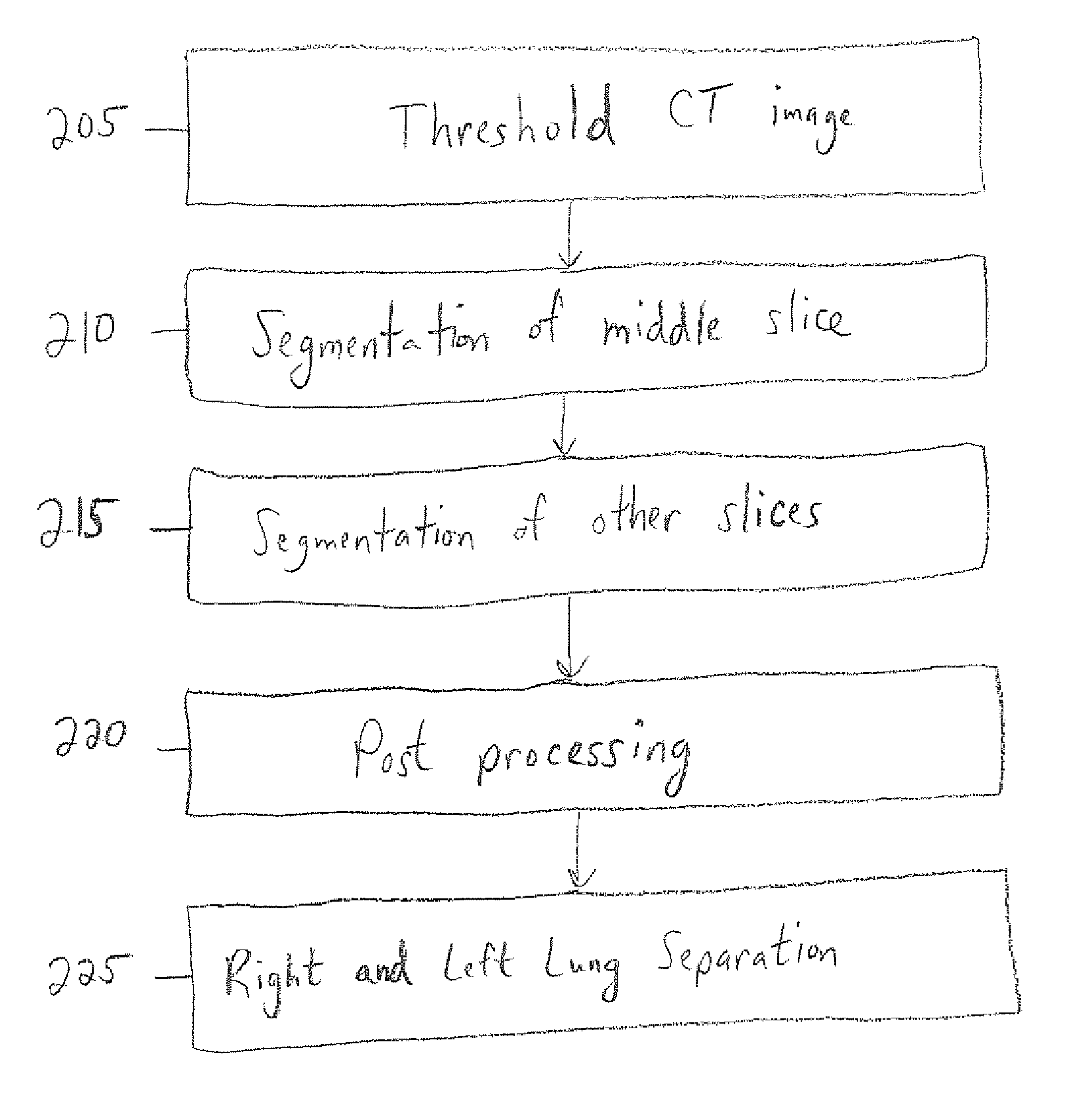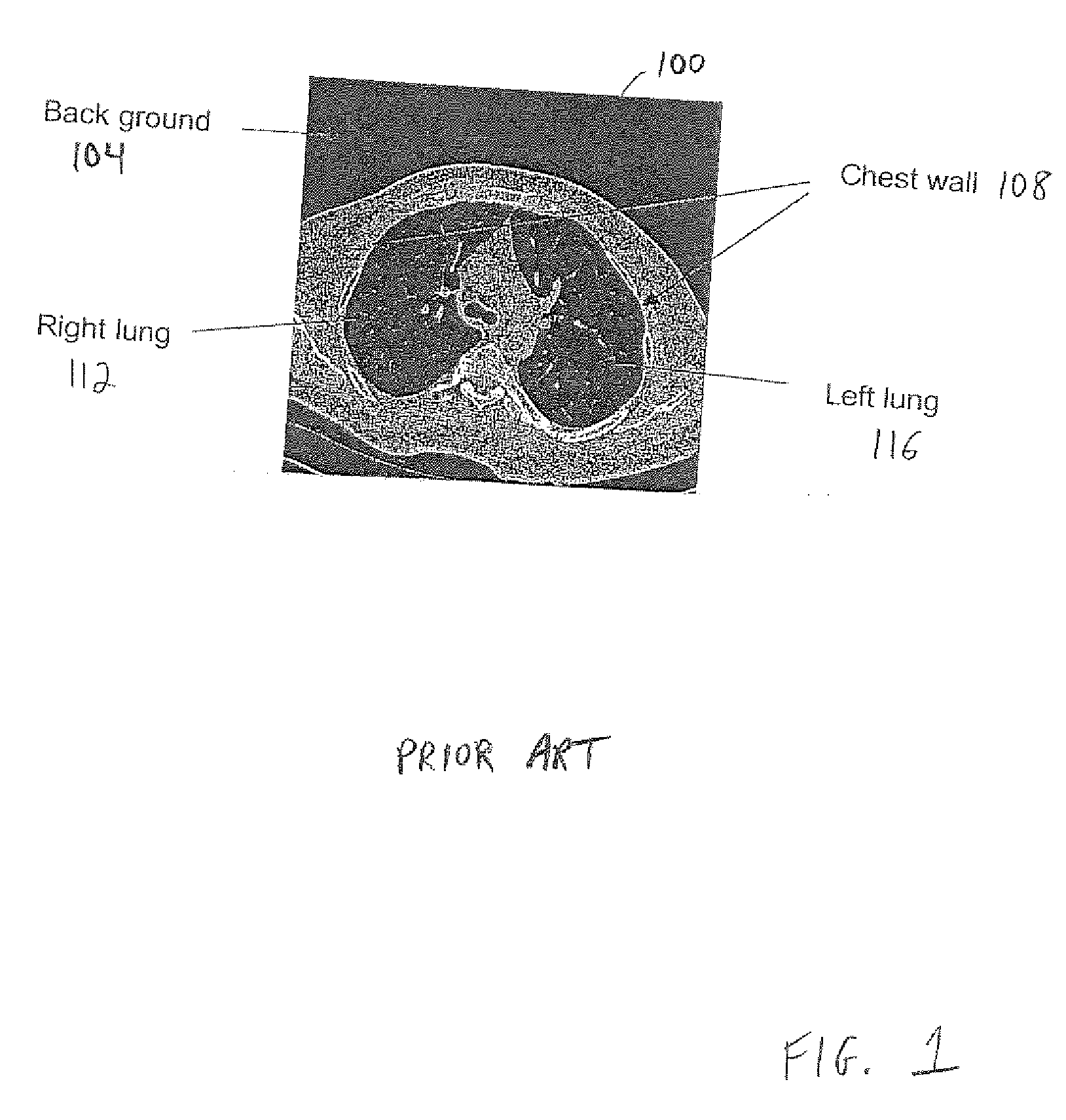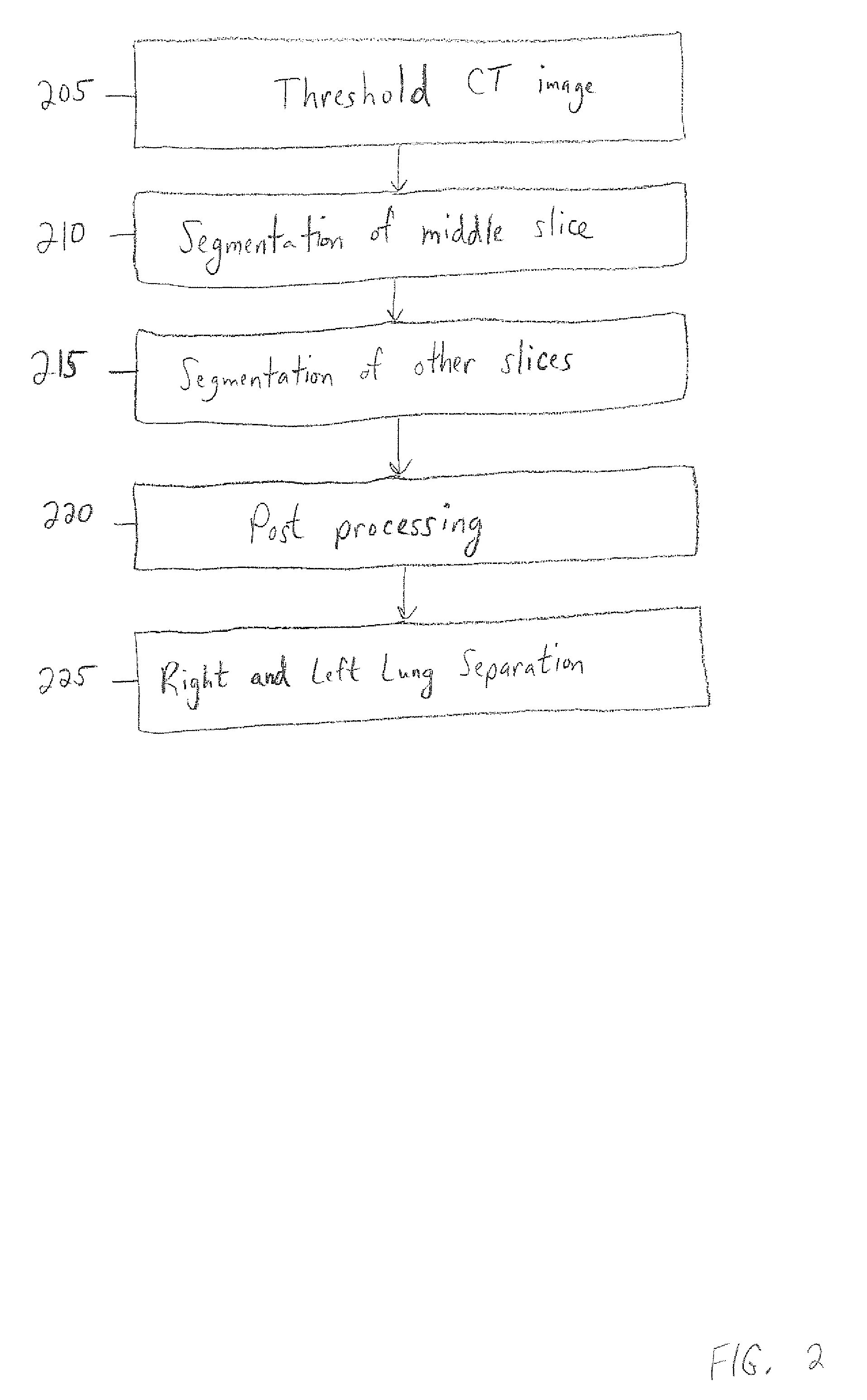Method and System for Automatic Lung Segmentation
a lung segmentation and automatic technology, applied in image enhancement, image analysis, instruments, etc., can solve the problems of increasing the difficulty of known conventional reconstruction methods to meet the stringent constraints of current imaging applications, requiring further manual correction, and unsatisfactory semi-automatic methods, so as to improve the efficiency of the segmentation algorithm and increase the efficiency of the lung segmentation technique.
- Summary
- Abstract
- Description
- Claims
- Application Information
AI Technical Summary
Benefits of technology
Problems solved by technology
Method used
Image
Examples
Embodiment Construction
[0029] In accordance with an embodiment of the present invention, a method and apparatus for automatically segmenting lung regions are described. A contour-based method to extract lung regions in 2D includes performing region growing in a “middle slice” of the CT volume. Segmentation may be executed on a slice-by-slice basis, thereby enabling multiple slices to be segmented at substantially the same time.
[0030]FIG. 2 is a flowchart illustrating the steps performed by a computer in accordance with an embodiment of the present invention. The computer first thresholds a CT image in step 205 using a predetermined threshold. Lung parenchyma tissues (i.e., the respiratory portions of the lung) have a density level in the range of −910 HU (i.e., Hounsfield units) to −500 HU, while the chest wall, vessel and bone are above this level. In one embodiment, the predetermined threshold is set to −400 HU. This threshold can be used to extract the lung regions (when segmenting a middle slice, as ...
PUM
 Login to View More
Login to View More Abstract
Description
Claims
Application Information
 Login to View More
Login to View More - R&D
- Intellectual Property
- Life Sciences
- Materials
- Tech Scout
- Unparalleled Data Quality
- Higher Quality Content
- 60% Fewer Hallucinations
Browse by: Latest US Patents, China's latest patents, Technical Efficacy Thesaurus, Application Domain, Technology Topic, Popular Technical Reports.
© 2025 PatSnap. All rights reserved.Legal|Privacy policy|Modern Slavery Act Transparency Statement|Sitemap|About US| Contact US: help@patsnap.com



